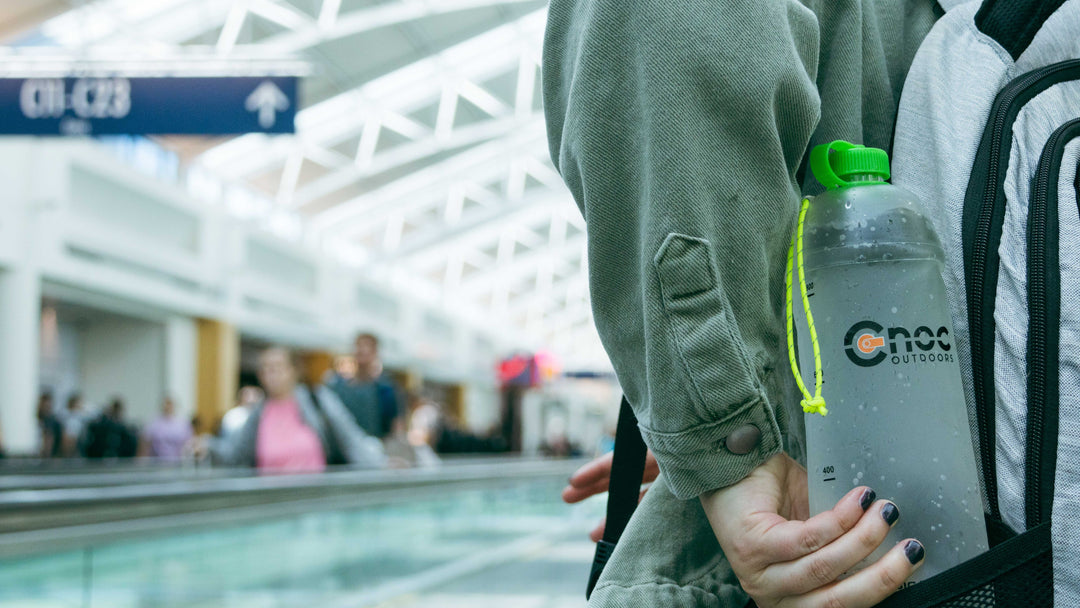The Right to Repair and Product Design at CNOC

If you have spent any amount of time outdoors, you know that your gear is just a second away from some potential fail point: a drop, a twist, a gust of wind, animals, or anything else really. When recreating outdoors, it often seems that we are almost trying to ruin our gear.
Even the most durable and robust kit will have some fail in the form of a rip, a seam opening, a hole, a break, etc. Fails are inevitable; the important question is whether the fail will be manageable or catastrophic.
Gear and the point of no return
What we, as users, really want to avoid is having any kind of catastrophic gear failure that means the item is no longer usable in any capacity. Just like an injury, we want those to be minor enough (due to skills, practice and quality materials), that you can stay on trail and avoid a bail out. Nothing ruins a trip more than a need to bail out...
Catastrophic gear fail is exactly as it sounds: gear breaks such that no matter what, the piece of gear just can't be used: it won't stay up, hold volume, stay together, etc. It is just unusable.

Personally, I can't count the number of catastrophic fails I have had, some of them infuriatingly small and stupid, like losing the cap for my water container! Obviously, some are pretty clear: a huge rip in the tent fly, a busted open air mat, separated shoe sole, etc. Those are really, almost impossible, to fix in the field.
On the other hand, we have gear that can be fixed. With the right skills, experience and design, we can move most gear in this category, even if those might seem impossible: hole in a mattress, rip in a sleeping bag, broken backpack strap, broken tent pole, etc. If designed well, and with the right skill, almost all of those things, though annoying, become minor, since they are repairable. They don't need to take you to the point of no return: the bail out.

Gear design and reparability
You have probably heard about (or felt yourself) the grumbles of modern car ownership: you can only fix it with dedicated computers; backyard car maintenance is almost impossible. John Deer is facing a class action lawsuit due to this exact issue of the right to repair and Apple has been experiencing a big backlash about it in Europe.
We like to repair our things, especially in extreme conditions, like a long backcountry trip. In fact, the ability to do so might be the difference between a life or death situation. With this mindset, one of the key feature of any of our products - and what makes them really unique - is that the design is set to allow reparability at two levels: temporary field repair with what hikers usually carry, and a way to have a more durable and permanent repair when conditions allow (home, town, resupply, etc).
The idea is that you can always problem solve in the backcountry and thereby avoid any kind of a catastrophic fail (though those can happen), allowing you to continue and enjoy your adventure after a slightly annoying situation. And when you are at the front country, head over and sort out a more permanent solution (like a spare part from us?) so that piece of gear can take part in your next adventure.
We are not trying to say that catastrophic fails of our gear doesn't happen, but it is much rarer than one might think, exactly because we design it for repair, and not to fail and dispose.

We'll conclude with a great review from William Landon Farrell about our poles, noting exactly this mindset:
There is a story told of a farmer who lived in nearby Chesham, New Hampshire. The farmer often boasted that he "had the sharpest and most durable axe in the region". The farmer said that, as a young boy, his grandfather had given him the axe and that he'd been using it every day for the past 72 years. He went on to say that while he had replaced the handle six times and the head twice, it remains the "best damn axe he ever owned".
In many ways, my CNOC carbon trekking poles are like the Chesham Farmer's axe.
Through the past two years, I've hiked, Nordic walked and snowshoed hundreds (perhaps a thousands) of miles, replaced the carbide tips three times, changed three pairs of mud baskets, replaced my snow basket and when I recently got the lower shaft snagged in my snowshoe when I crashed down a ravine, I had to order and replace the broken lower shaft.
And yet, everything else that should have broken or worn out from my near daily use of these poles...hasn't!
When I purchased these poles back in June of 2020, the advertisement said that "these CNOC trekking poles would be the last pair of trekking poles that I would ever buy".
What kind of business model is this?
Imagine, making a product that can "last" a lifetime.
Perhaps someday, I too will leave my CNOC trekking poles to my grandson... just like the Chesham Farmer.









Thank you for being mindful of this need, especially during a time when inflation is causing many outdoors enthusiasts to find ways to save so that we can continue getting out there and enjoying the outdoors.
“Eat it up, wear it out, make it do, or do without”.
Bonjour et merci pour vos mails , dommage que vous soyez si éloigné de la France ; effectivement la réparation et la remise en état des équipements de rando est une bonne chose à faire.
Cordialement.
Olivier Birmand
Leave a comment